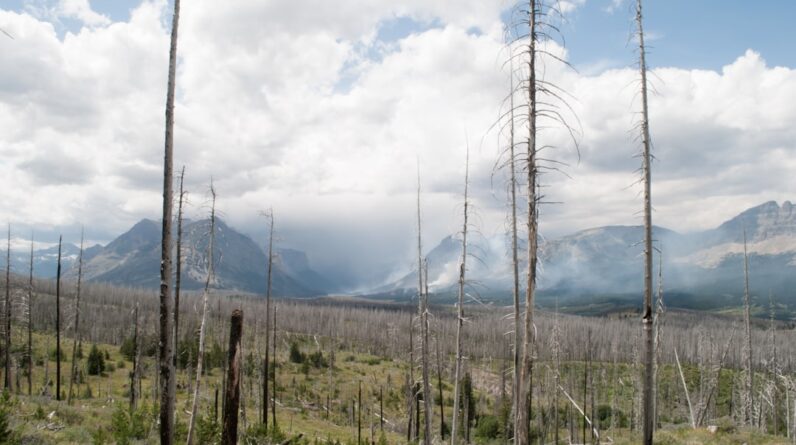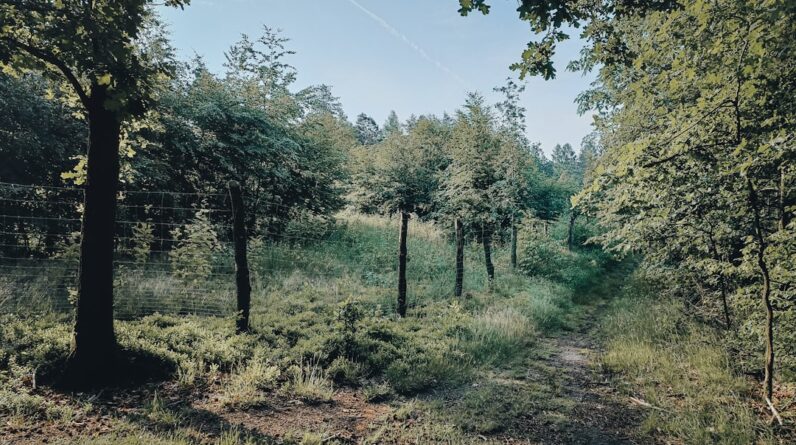
Reforestation plays a crucial role in maintaining the health and sustainability of river basins. As you may know, river basins are vital ecosystems that support a diverse range of flora and fauna while providing essential resources for human communities. When you consider the interconnectedness of these ecosystems, it becomes clear that reforestation is not merely an environmental concern; it is a necessity for the well-being of both nature and humanity.
By restoring tree cover in these areas, you can help stabilize soil, reduce erosion, and improve water quality, all of which are essential for the health of the river systems. Moreover, reforestation in river basins contributes to climate change mitigation. Trees act as carbon sinks, absorbing carbon dioxide from the atmosphere and helping to combat global warming.
When you engage in reforestation efforts, you are not only enhancing local ecosystems but also contributing to global climate stability. This dual benefit underscores the importance of reforestation as a strategy for both environmental restoration and climate action. As you reflect on the significance of these efforts, consider how your involvement can lead to a healthier planet for future generations.
Key Takeaways
- Reforestation is crucial for restoring and protecting river basins as it helps to prevent erosion, regulate water flow, and improve water quality.
- Deforestation can lead to soil erosion, sedimentation of rivers, and loss of biodiversity in river basins and watersheds.
- Reforestation brings numerous benefits to river basins and watersheds, including improved water quality, increased water retention, and enhanced habitat for wildlife.
- Successful reforestation requires the use of techniques such as agroforestry, assisted natural regeneration, and planting native tree species.
- Case studies have shown that community engagement is essential for the success of reforestation projects, as it fosters local ownership and long-term sustainability.
How Deforestation Affects River Basins and Watersheds
Deforestation has far-reaching consequences for river basins and watersheds that extend beyond the immediate loss of trees. When you think about the impact of removing trees from these areas, consider how it disrupts the natural balance of the ecosystem. Trees play a critical role in regulating water cycles; they absorb rainfall and release moisture back into the atmosphere through a process known as transpiration.
Without trees, you may notice increased runoff during heavy rains, leading to flooding and soil erosion. This not only degrades the land but also affects water quality by increasing sedimentation in rivers. Additionally, deforestation can lead to habitat loss for countless species that rely on forested areas for survival.
As you witness the decline of biodiversity in these regions, it becomes evident that the health of river basins is intricately linked to the presence of trees. The removal of forests can disrupt food chains and lead to the extinction of vulnerable species. This loss of biodiversity can have cascading effects on ecosystem services, such as pollination and pest control, which are essential for maintaining healthy environments.
Understanding these impacts can motivate you to advocate for reforestation initiatives that restore balance to these vital ecosystems.
The Benefits of Reforestation for River Basins and Watersheds

Reforestation offers a multitude of benefits that extend well beyond the immediate restoration of tree cover. When you participate in reforestation efforts, you contribute to improved water quality in river basins. Trees act as natural filters, trapping pollutants and sediments before they can enter waterways.
This filtration process is essential for maintaining clean water supplies for both human consumption and aquatic life. As you engage in these initiatives, you are directly enhancing the health of local rivers and ensuring that communities have access to safe drinking water. In addition to improving water quality, reforestation also enhances biodiversity within river basins.
By planting native tree species, you create habitats for various wildlife, including birds, mammals, and insects. This increase in biodiversity can lead to more resilient ecosystems capable of withstanding environmental changes. Furthermore, as you witness the revitalization of these habitats, you may find that they provide recreational opportunities and promote ecotourism, benefiting local economies.
The multifaceted advantages of reforestation highlight its importance as a sustainable solution for preserving river basins and watersheds.
Techniques and Strategies for Successful Reforestation
To achieve successful reforestation in river basins, it is essential to employ effective techniques and strategies tailored to specific environments. One approach you might consider is selecting native tree species that are well-adapted to local conditions. Native trees not only thrive better but also support local wildlife by providing food and shelter.
When planning a reforestation project, conducting thorough research on the area’s ecology can help you make informed decisions about which species to plant. Another important strategy is to involve local communities in the reforestation process. Engaging with residents can foster a sense of ownership and responsibility toward the project.
You might organize workshops or educational programs to raise awareness about the benefits of reforestation and encourage community participation. Additionally, implementing agroforestry practices—where trees are integrated into agricultural landscapes—can enhance both biodiversity and agricultural productivity. By combining traditional farming methods with reforestation efforts, you can create a sustainable model that benefits both people and the environment.
Case Studies of Successful Reforestation Projects
Examining successful case studies can provide valuable insights into effective reforestation practices in river basins. One notable example is the reforestation project in the Loess Plateau in China. Over several decades, this initiative transformed a severely degraded landscape into a thriving ecosystem by planting millions of trees and implementing sustainable land management practices.
As you explore this case study, you’ll see how community involvement and government support played pivotal roles in restoring the region’s ecological balance while improving local livelihoods. Another inspiring example is the Atlantic Forest Restoration Pact in Brazil, which aims to restore 15 million hectares of forest by 2050. This ambitious project brings together various stakeholders, including NGOs, government agencies, and private landowners, to collaborate on reforestation efforts.
By sharing resources and knowledge, these groups have successfully planted millions of trees while promoting sustainable land use practices. As you reflect on these case studies, consider how similar approaches could be applied to your local river basins to achieve meaningful restoration outcomes.
The Role of Community Engagement in Reforestation Efforts

Community engagement is a cornerstone of successful reforestation initiatives in river basins. When you involve local communities in these efforts, you tap into their knowledge and understanding of the land, which can significantly enhance project outcomes. Engaging with residents allows you to identify specific needs and challenges they face regarding environmental degradation and resource management.
By fostering open communication and collaboration, you can create tailored solutions that resonate with community members. Moreover, community engagement fosters a sense of stewardship among residents. When individuals feel connected to their environment, they are more likely to take an active role in its preservation.
You might consider organizing tree-planting events or educational workshops that empower community members to participate in reforestation efforts actively. By cultivating this sense of ownership, you can inspire long-term commitment to protecting river basins and ensuring their sustainability for future generations.
The Impact of Reforestation on Biodiversity and Ecosystems
Reforestation has a profound impact on biodiversity and ecosystems within river basins. As you restore tree cover, you create habitats that support a wide array of plant and animal species. This increase in biodiversity contributes to ecosystem resilience, allowing natural systems to adapt to environmental changes more effectively.
For instance, diverse ecosystems are better equipped to withstand pests and diseases, ensuring their long-term health. Additionally, reforested areas often serve as corridors for wildlife movement, connecting fragmented habitats and promoting genetic diversity among species populations. As you witness the revitalization of these ecosystems, you’ll likely observe an increase in bird populations, pollinators, and other wildlife returning to the area.
This resurgence not only enhances ecological balance but also enriches human experiences by providing opportunities for recreation and education about nature.
The Future of Reforestation in Restoring and Protecting River Basins and Watersheds
Looking ahead, the future of reforestation holds great promise for restoring and protecting river basins and watersheds worldwide. As awareness grows about the importance of healthy ecosystems for climate resilience and human well-being, more individuals and organizations are likely to engage in reforestation efforts. You may find that innovative technologies—such as drone-assisted planting or remote sensing—are increasingly being utilized to enhance reforestation efficiency and effectiveness.
Furthermore, as global initiatives like the Bonn Challenge aim to restore millions of hectares of degraded land by 2030, there is an opportunity for collective action on an unprecedented scale. By participating in these initiatives or supporting local projects, you can contribute to a brighter future for river basins around the world. The journey toward restoring these vital ecosystems requires commitment and collaboration; however, with your involvement, it is possible to create lasting change that benefits both nature and humanity alike.
If you are interested in learning more about the potential consequences of increased tree planting, check out the article Increased Tree Planting Will Unbalance the World’s Ecosystems. This article discusses how planting too many trees in certain areas can disrupt the delicate balance of ecosystems. It is important to consider all aspects of reforestation efforts to ensure they are sustainable and beneficial in the long run.
FAQs
What is reforestation?
Reforestation is the process of planting trees in areas where forests have been depleted or destroyed. It aims to restore the ecological balance and improve the environment.
How does reforestation revive river basins and watersheds?
Reforestation helps revive river basins and watersheds by preventing soil erosion, regulating water flow, improving water quality, and providing habitat for diverse plant and animal species. Trees help to stabilize soil, reduce sedimentation in rivers, and maintain the natural flow of water.
What are the benefits of reforestation for river basins and watersheds?
Reforestation provides numerous benefits for river basins and watersheds, including improved water quality, increased water retention, reduced flooding, enhanced biodiversity, and the preservation of natural habitats. It also helps to mitigate the impacts of climate change by sequestering carbon dioxide from the atmosphere.
Where are reforestation efforts most needed for river basins and watersheds?
Reforestation efforts are most needed in areas where deforestation, overgrazing, and unsustainable land use practices have led to the degradation of river basins and watersheds. These areas often experience soil erosion, reduced water quality, and diminished biodiversity.
What are some successful examples of reforestation projects for river basins and watersheds?
Successful examples of reforestation projects for river basins and watersheds include the Atlantic Forest Reforestation Project in Brazil, the Watershed Management Project in India, and the Loess Plateau Watershed Rehabilitation Project in China. These projects have demonstrated the positive impact of reforestation on water resources and ecosystems.





